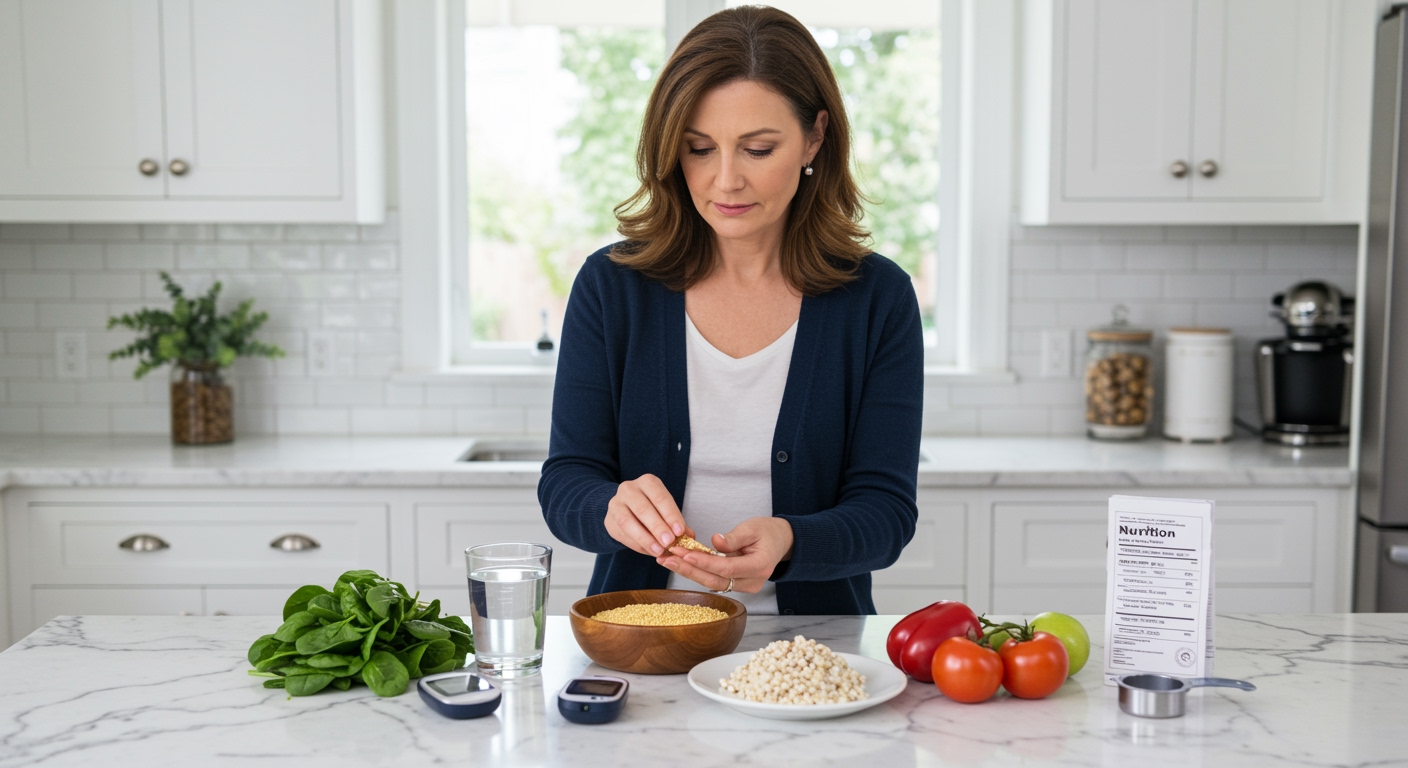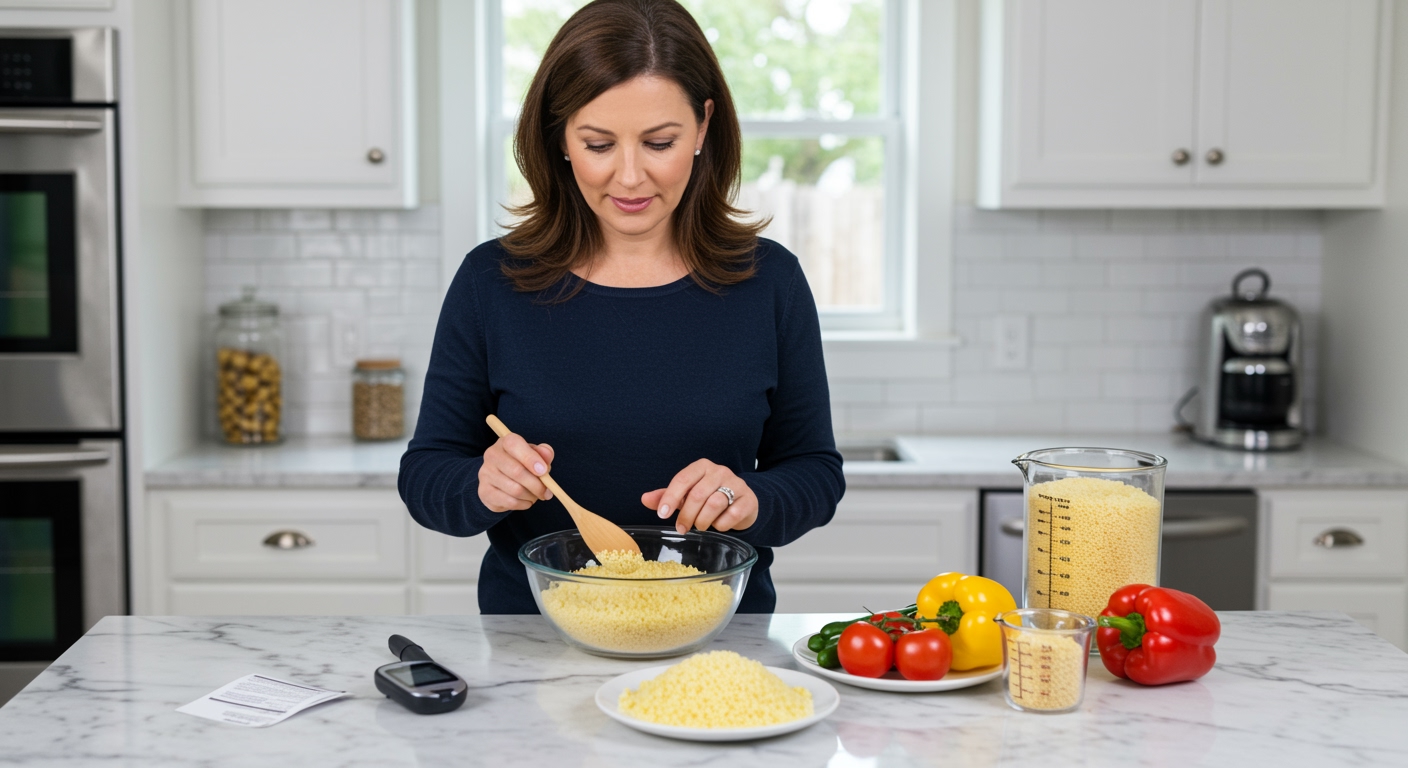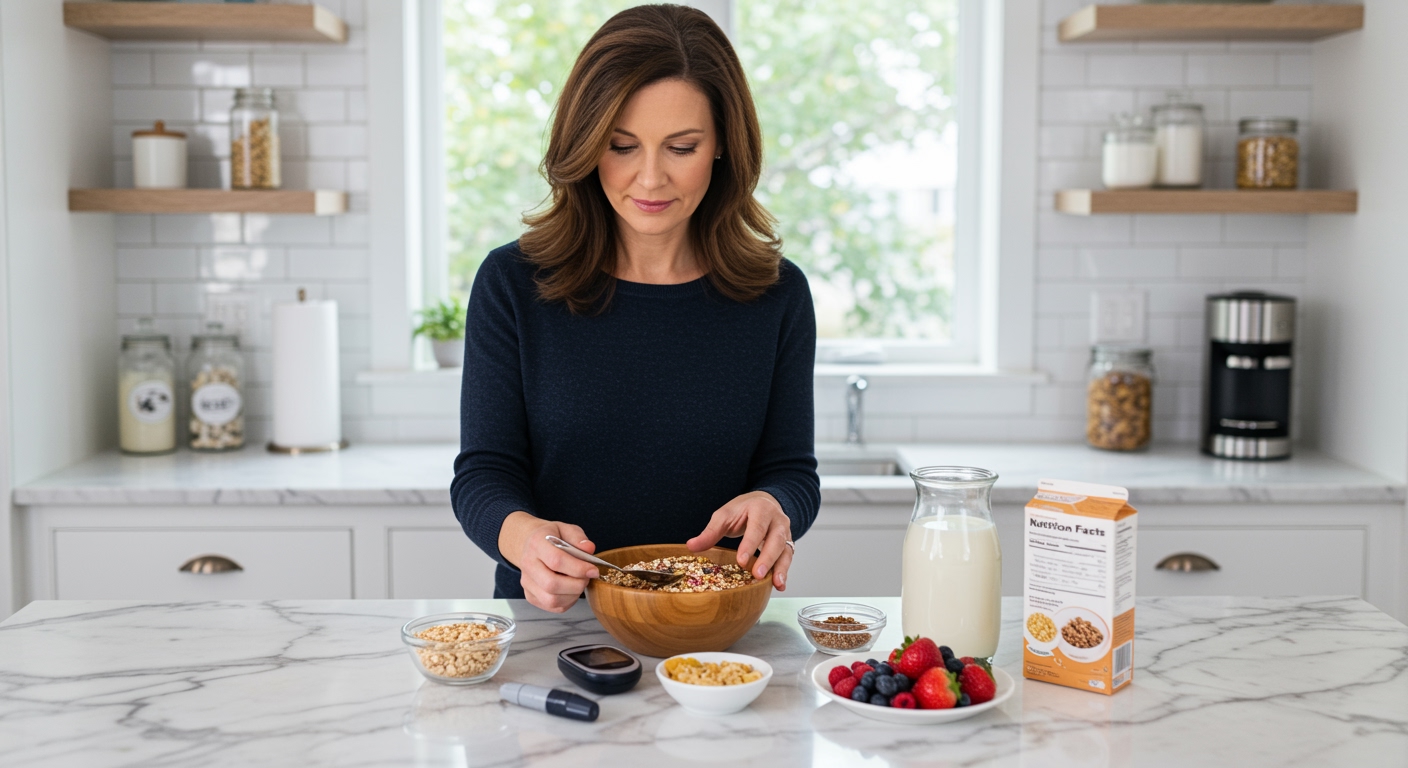✪ Key Takeaway: Finger millet is excellent for diabetes due to its low glycemic index and high fiber content that helps control blood sugar.
Introduction
Your doctor tells you to avoid rice and wheat, but nobody mentions finger millet.
You might be wondering if this ancient grain can actually help manage your diabetes without spiking your blood sugar levels.
Hi, I am Abdur, your nutrition coach and today I am going to explain why finger millet might be the missing piece in your diabetes management puzzle.
What Makes Finger Millet Different From Regular Grains?
Finger millet stands apart from rice and wheat because of its unique nutritional profile that works in your favor.
This small grain contains complex carbohydrates that break down slowly in your digestive system.
Unlike refined grains that cause rapid blood sugar spikes, finger millet releases glucose gradually into your bloodstream.
The grain packs an impressive fiber content of about 18 grams per 100 grams, which is significantly higher than rice or wheat.
This high fiber content slows down the absorption of sugar and helps maintain steady glucose levels throughout the day.
Research shows that finger millet has a glycemic index of around 50, placing it in the low to moderate category compared to white rice which scores 73.
✪ Fact: Finger millet contains three times more fiber than white rice, making it superior for blood sugar control.
How Does Finger Millet Actually Control Blood Sugar?
The magic happens in your digestive system when you eat finger millet instead of regular grains.
The high fiber content forms a gel-like substance in your stomach that slows down the movement of food through your digestive tract.
This slower digestion means glucose enters your bloodstream at a controlled rate rather than flooding it all at once.
Your pancreas gets time to produce adequate insulin without being overwhelmed, which is crucial for diabetes management.
The grain also contains resistant starch that acts like fiber and feeds beneficial bacteria in your gut.
These bacteria produce short-chain fatty acids that improve your body’s insulin sensitivity over time.
Studies indicate that regular consumption of finger millet can reduce post-meal blood sugar spikes by up to 32% compared to rice-based meals.
✪ Pro Tip: Soak finger millet overnight before cooking to reduce cooking time and improve digestibility.
What Other Benefits Does Finger Millet Offer For Diabetics?
Beyond blood sugar control, finger millet provides several additional advantages that support your overall health.
The grain contains magnesium and chromium, two minerals that play vital roles in glucose metabolism and insulin function.
Magnesium helps your cells respond better to insulin, while chromium enhances insulin sensitivity throughout your body.
Finger millet also provides antioxidants like phenolic compounds that protect your blood vessels from damage caused by high blood sugar.
These antioxidants help prevent diabetic complications such as nerve damage, kidney problems, and cardiovascular disease.
The grain supports weight management because its high fiber and protein content keeps you feeling full for longer periods.
Maintaining a healthy weight is crucial for diabetes management as excess weight makes your body more resistant to insulin.
✪ Note: Finger millet contains more calcium than milk, supporting bone health often compromised in diabetics.
How Should You Include Finger Millet In Your Diet?
Start by replacing one meal per day with finger millet to see how your body responds.
You can cook finger millet like rice by using a 1:3 ratio of millet to water and simmering for about 20-25 minutes.
The cooked grain has a slightly nutty flavor and can be seasoned with vegetables, herbs, and spices according to your taste preferences.
For breakfast, try finger millet porridge with cinnamon and a small amount of nuts for added flavor and nutrition.
You can also grind finger millet into flour and use it to make rotis or flatbreads as a substitute for wheat flour.
Monitor your blood sugar levels when you first introduce finger millet to understand how it affects your individual glucose response.
Most people with diabetes can safely consume 1/2 to 1 cup of cooked finger millet per meal without significant blood sugar spikes.
✪ Pro Tip: Combine finger millet with protein and healthy fats to further slow glucose absorption and improve satiety.
Are There Any Precautions You Should Take?
While finger millet is generally safe for diabetics, there are a few considerations to keep in mind.
Some people may experience digestive discomfort when they first introduce high-fiber foods like finger millet into their diet.
Start with small portions and gradually increase the amount to allow your digestive system to adapt.
Finger millet contains goitrogens, compounds that can interfere with thyroid function if consumed in very large quantities.
However, normal dietary consumption poses no risk, and cooking reduces goitrogen content significantly.
If you take diabetes medications, monitor your blood sugar more frequently when adding finger millet to avoid hypoglycemia.
The grain’s blood sugar lowering effects combined with medications might require dosage adjustments under medical supervision.
✪ Note: Always consult your healthcare provider before making significant dietary changes if you take diabetes medications.
The Bottom Line
Finger millet is an excellent choice for people with diabetes because it provides steady energy without causing dangerous blood sugar spikes.
Good nutrition is not about perfection, but about making better choices consistently, and finger millet represents one of those better choices you can make today.
I would love to hear about your experience with finger millet or any questions you might have about incorporating it into your diabetes management plan, so please share your thoughts in the comments below.
References
At NutritionCrown, we use quality and credible sources to ensure our content is accurate and trustworthy. Below are the sources referenced in creating this article:
- Frontiers in Nutrition: Nutritional and Health Benefits of Millets
- PubMed: Glycemic Index of Finger Millet
- Frontiers in Nutrition: Millet Consumption and Diabetes Management
- Healthline: Millet for Diabetes





